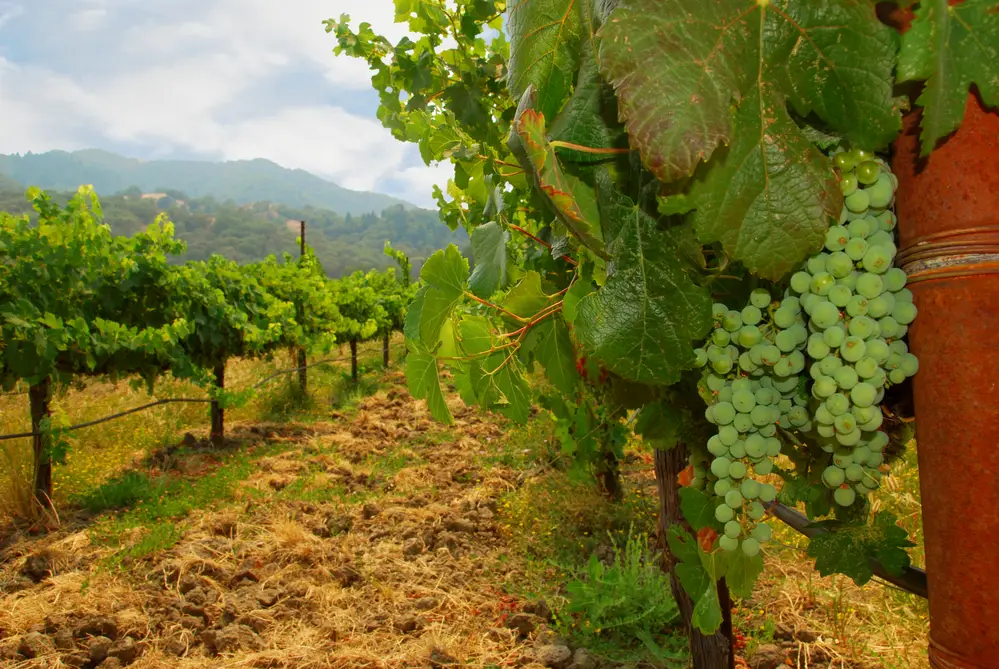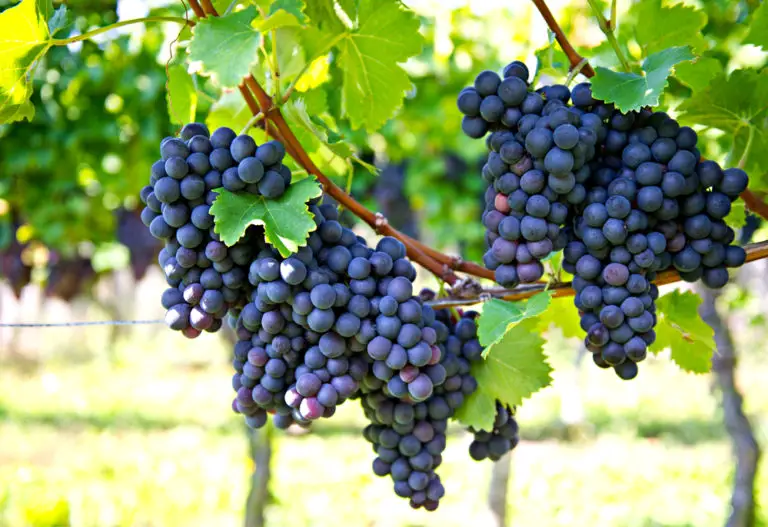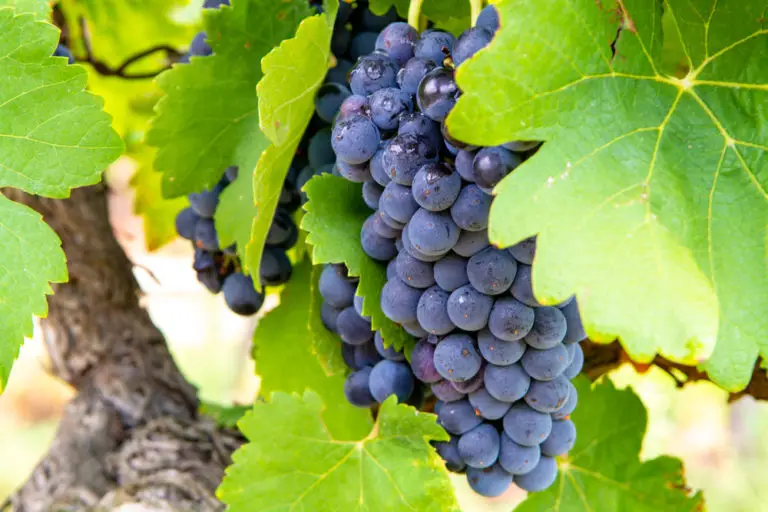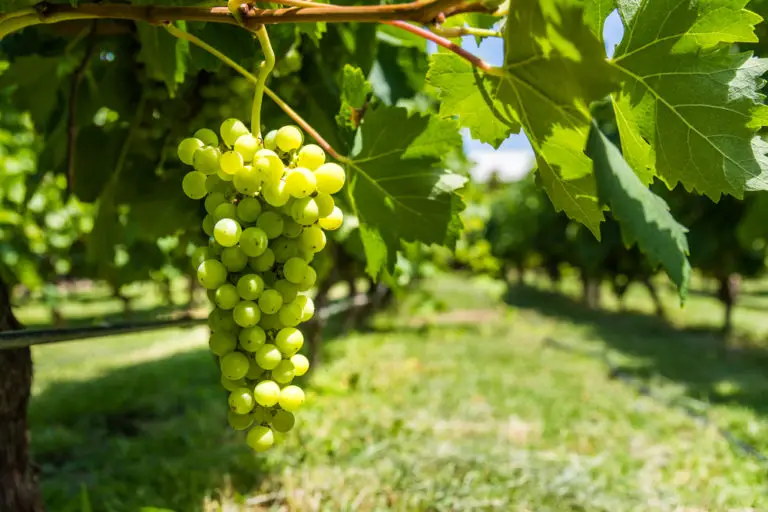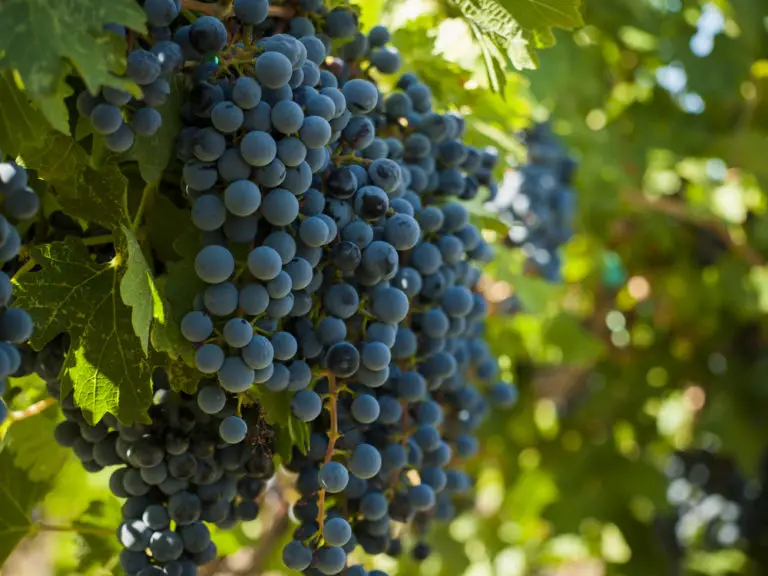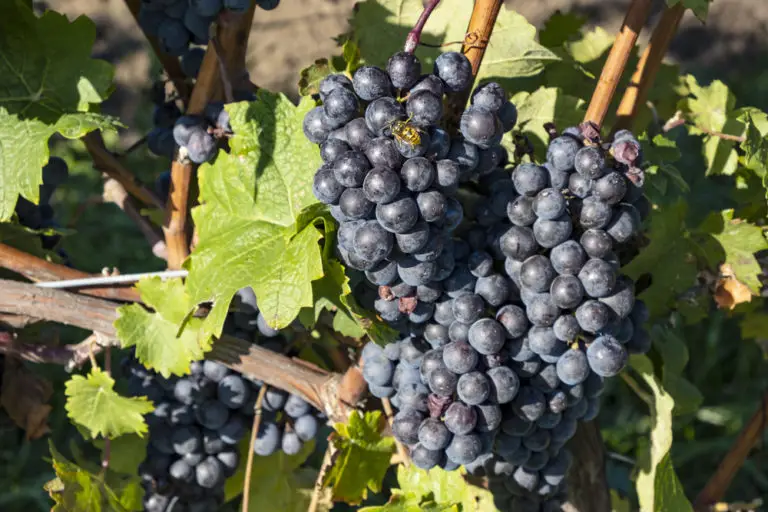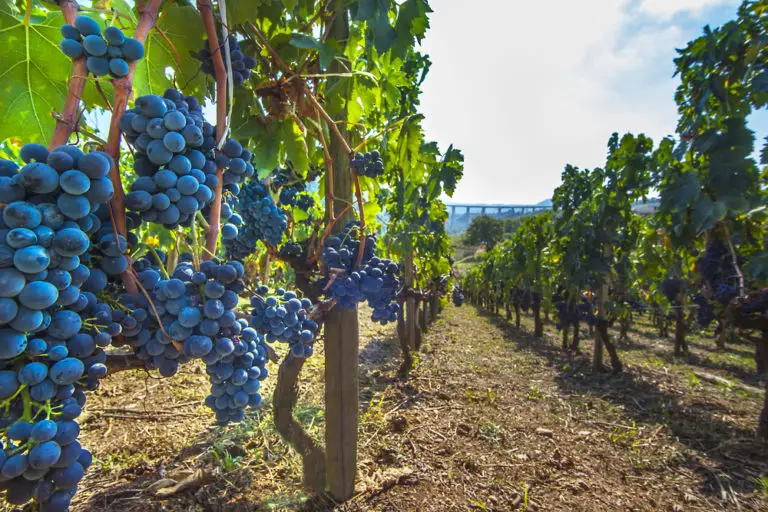Sauvignon Blanc: The Beginners Guide (2024)
Sauvignon Blanc is one of the most famous white grape varieties with a worldwide distribution. In its home country of France, it is one of the noble vines, the ‘Cepage noble’, and is considered the second most important white wine variety after Chardonnay. It comes from a crossing of Traminer x Chenin Blanc.
Wine Color: White wine with hints of green
Characteristics: Medium-high acidity, medium body
Color of berry skin: White
Flavor: Semi-dry
ABV: 11–13.5%
Origin: Bordeaux region of France
Notable Regions: South Africa, Chile, New Zealand, California, Loire Valley, Bordeaux
Most Expensive Bottle: Screaming Eagle Sauvignon Blanc, Oakville
Common synonyms: Blanc Doux, Blanc Fume, Sauvignon blanco, Sauvignon Fume, Sauvignon Gros
- What is Sauvignon Blanc?
- Known Regions for Sauvignon Blanc
- Popular Blends of Sauvignon Blanc
- How to Enjoy Sauvignon Blanc?
- How is Sauvignon Blanc Made?
- History of Sauvignon Blanc
- Alternatives for Sauvignon Blanc
What is Sauvignon Blanc?
Sauvignon Blanc is one of the most popular white wine varieties in the world. The vine, which was created by crossing Traminer and Chenin Blanc, originally comes from the barren, calcareous soils of the French Loire Valley. Today, of course, it enjoys worldwide popularity and is grown on all continents.
Most wine experts count them among the “cépages nobles”, the premium league of grape varieties. Connoisseurs love Sauvignon Blanc wine ingredients for their fresh yet subtle taste, which is characterized by piquant aromas of currants and gooseberries, but also by a mineral tone and “green” notes of fresh grass or asparagus.
Depending on the soil and climate conditions in the growing area, other aromas can appear – which makes the meaning of Sauvignon Blanc, with its finely structured acidity, one of the most diverse and interesting wines of all. It is a good choice for fish and poultry dishes in particular, but also pasta and salads. Sauvignon Blanc pronunciation is sow·vuh·nyon blongk.
Sauvignon Blanc vs. Pinot Grigio vs. Chardonnay
Pinot grigio is a white grape variety from northern Italy with sour green and lemon flavors. Sauvignon Blanc and Pinot Grigio are both grown in South Tyrol and Friuli-Venezia Giulia.
The white sauvignon from Italy has a little more character and complexity than the pinot grigio grown in the same regions. Sauv Blanc is more aromatic (jumps out of the glass into your nose) than Pinot Grigio. Grigio is distinct in being quite neutral.
Chardonnay is a more neutral grape variety than Sauvignon Blanc, with slightly lower acidity and aromas of apple, lemon, and pineapple. Chardonnay easily takes on oak aromas when aged in barrels, producing a full-bodied, vanilla, and sometimes buttery style.
The aroma of Sauvignon Blanc wine is more floral and green, and it is generally not treated with oak. One exception is Fumé Blanc, as some Sauvignon Blanc wines are California labeled, which gains richness and smoky depth from aging in oak barrels.
Sauvignon Blanc Characteristics
A classic Sauvignon Blanc characteristic is that it is full of crackling freshness, lively aromas, dry taste, and energetic character. It has more and more lovers worldwide. Especially the fruity style, which was created in New Zealand, has contributed to the new great popularity.
The Californian fumé Blanc is also finding more and more followers worldwide. Sauvignon Blanc is also used to make semi-sweet and sweet wines. This type of Sauvignon Blanc is the cornerstone for the world-famous dessert wine Sauternes.
The variety, which is widespread worldwide, has a characteristic bouquet, which can be obtrusively unripe grassy in wines made from grapes that are not fully ripe – ripe grapes develop a variety of aromas of black currants, gooseberries, and tropical fruits.
Depending on the degree of maturity, the wines develop from subtle to very complex, which in connection with barrique aging and biological acid reduction have great development potential. With overripe grapes, the diverse aroma nuances recede into the background and a strong, spicy wine develops.
Sauvignon Blanc Taste Profile
Sauvignon Blanc grape is a late maturing white wine grape variety with a medium yield. The frost-sensitive variety needs warm locations on fertile and not too dry soil. Purely varietal, Sauvignon wine usually has idiosyncratic and expressive aromas.
Freshly mown grass, green peppers, currants, and gooseberries are typical. Slight sulfur or flint notes can also be identified. Depending on the growing area and expansion, the character varies significantly. Wines from New Zealand are often described as peppery.
In France, warmer fermentation emphasizes the mineral characteristics of the wines. Overseas, on the other hand, lower temperatures are preferred to bring out fruity aromas.
Dry Sauvignon Blanc wines from the Loire Valley or New Zealand exhibit aromas of gooseberries and vegetal and vegetable elements. Freshly mown grass, asparagus, green peppers, and fennel are typical of the wines.
Since the climatic conditions are very different due to the worldwide distribution of Sauvignon Blanc, the type of expansion varies considerably, and the Sauvignon Blanc taste profile develops very different aromas depending on the time of harvest, the variety of Sauvignon Blanc flavor in the wines is enormous.
Sauvignon Blanc Ageability
There are not many white wines capable of aging. When they have the necessary strength and balance, however, they give rise to surprising tastings: over time the initial qualities of these wines blend wonderfully.
Lack of tannins, white wine is defenseless in the face of the threat of oxidation and the other risks that time does not fail to put in its way. To face the challenge of aging, a white can only count on the strength and density of its raw material and, above all, on its acidity, the only character capable of blocking bacterial aggression.
The winemakers, however, have developed a technique that allows enriching even white wines with tannins: simply the elaboration and aging of the wine are carried out in wooden barrels.
The contribution of tannins from the wood thus compensates for the original tannic weakness of the wine. During this phase of aging in wooden barrels, the wine undergoes a slight oxidative action. Subsequently, it is placed in a reducing environment, the bottle, in which its life of aging wine will begin.
Notable Regions for Sauvignon Blanc
Sauvignon Blanc flavor profile is either loved or hated by people. There is no in-between when it comes to this wine. It has a wide range of flavors, and they vary based on the Sauvignon Blanc region of production. It is widely planted in New Zealand, France, Chile, the USA, and Italy.
South Island, New Zealand
New Zealand Sauvignon Blanc grapes are grown in the Marlborough region of the Wairau River Valley at the northern tip of the South Island. New Zealand Sauvignon Blancs are dry wines with powerfully aromatic citrus flavors like grapefruit and lime, tropical notes like passion fruit, guava, and white peach, and a punch to bell pepper and jalapeño herbal base.
Loire Valley, France
Many classic cool-climate expressions of white wine Sauvignon Blanc come from the Loire Valley wine region of central France. Loire Valley winemakers produce Sancerre and Pouilly-Fumé, two iconic appellations known for their elegant and crisp Sauvignon Blanc wines. Sancerre wines are fresh and lemony, with restrained fruitiness and a herbaceous quality like freshly cut grass.
Andes Mountains, Chile
High altitudes can also contribute to a cool hospitable climate for Sauvignon Blanc. It is the case with Chilean Sauvignon Blanc grown in the San Antonio and Casablanca valleys in the Andes mountains, where producers take advantage of the cool climate to make understated and elegant Sauvignon Blanc.
Northern California, USA
Modern advances in winemaking, combined with the natural hardiness and adaptability of Sauvignon Blanc, mean that producers are getting good results with plantings in warmer climates than they once thought. The Sauvignon Blanc wine produced in the warm climate of Napa and Sonoma in California is heavy, higher in alcohol, and aged in oak barrels.
Alto-Adige & Friuli-Venezia Giulia, Italy
These two regions of Northern Italy are known for making great wines with Sauvignon Blanc. The wine produced here has aromas of peach mesh and passion fruit with herbal notes of tomato leaf and sage. It has a rich body similar to one found in New Zealand wines but the herbaceous-ness of French wines.
Popular Blends of Sauvignon Blanc
Because Sauvignon Blanc tasting notes have so much character on their own, it is usually made as a varietal wine (a wine made from a single varietal) rather than blended with other grapes. Sauvignon Blanc varietal wines are most commonly found in the Loire region of France, New Zealand, California, Chile, and South Africa.
Vasse Felix Sauvignon Blanc Semillon 2017
This wine is a blend of 75% Sauvignon Blanc abv and 25% Sémillon is produced from a selection of the best plots using modern Sauvignon Blanc wine-making techniques to develop a powerful and textured, complex wine. It has aromas of floral notes and then subtle notes of lemongrass, pawpaw, lychee, and pepper. The palate is soft and juicy with a nice texture revealing light and tangy finish of Tahitian lime and yogurt.
La Motte Sauvignon Blanc 2021
With the Sauvignon Blanc color ranging from green to straw yellow, the La Motte Sauvignon Blanc inspires every white wine lover and bewitches the senses with a fruity blend of gooseberries, green apples, and ripe lemons. Aromas of pineapple and passion fruit set tropical accents. The beautiful and balanced acidity ensures freshness, and the texture lingers on the palate for a long time.
Delaire Graff The View White Blend 2020
The View White Blend shimmers in beautiful Sauvignon Blanc wine color in the glass and already inspires every white wine fan with its great scent. Above all, tropical aromas, guava, grapefruit, and passion fruit pamper the senses of the connoisseur. On the palate, the blend of Sauvignon Blanc alcohol (94%) and Sémillon (6%) impresses with its complexity and rich texture, which is skilfully balanced by a crisp finish.
Jacoba Six White Blend 2018
With its complexity and rich fruit notes, the Jacoba Six White Sauvignon Blanc blends leave nothing to be desired. Filigree honey nuances and a fine acidity underline the spicy aromas on the palate. Thanks to its fresh and full-bodied character, the oak-matured cuvée of Sauvignon Blanc alcohol percentage (60%) and Sémillon (40%) is an excellent food accompaniment.
Backsberg John Martin Reserve Sauvignon Blanc 2019
The Backsberg John Martin Reserve Sauvignon Blanc profile inspires every white wine lover with its intensive play of aromas. Nuances of lemon blossoms paired with green notes of grass and gooseberries characterize the bouquet, while aromas of ripe limes, pears, and figs provide a nice fruity taste on the palate. The Backsberg John Martin Reserve Sauvignon blanc alcohol content is refined with Roussanne (5%) that impresses with unusual complexity and delicate spicy notes.
How to Enjoy Sauvignon Blanc?
Do you know what is the best way to enjoy any wine? It is by choosing the right serving temperature, stemware, and food pairing. Here are some recommendations that would make the Sauvignon Blanc wine enjoyable at its best. You can use this knowledge for other wines as well.
Food Pairings
We generally recommend an acidic white wine such as Sauvignon Blanc wine pairing for dishes with a lot of acidities, otherwise, the wine will seem too flat. Also, try the artichoke, which is difficult to pair with wine, with lots of lemon juice and Sauvignon Blanc – it works! Do you love dishes with mayonnaise or hollandaise sauce? Sauvignon Blanc is perfect with it. With these sauces, we also come to the asparagus – together with Sauvignon Blanc, it will be a classic.
If you love well-spiced or sweet dishes from Asia, you will love a fruity Sauvignon Blanc from New Zealand.
To drink Sauvignon Blanc with meat, we rely on dishes such as roast pork, schnitzel, or poultry with cream sauce.
Finally the cheese. We recommend more fruity Sauvignon Blancs with the cheese platter. Here, too, is a significantly better alternative than most red wines.
Temperature
Wine is a pleasant and fascinating drink but drinking Sauvignon Blanc at the right temperature is essential to fully appreciate all its best features.
Savoring a wine that is hot or too cold is not a great pleasure and also the moment in which the wine is served is very important because it is precisely in this phase that if you make a mistake you end up ruining a wine and losing an experience.
White wines are ideal if served at rather low temperatures (10-11 degrees maximum) because only in this way will you be able to obtain that sensation of true freshness and acidity capable of provoking a good white wine. Obviously, at a higher temperature, the pH does not change and the acidity values remain the same but it is the perception of the palate that changes.
Sauvignon Blanc should ideally be served at 8-10 degrees C.
Stemware
If you love tasting excellent bubbles or even just if you are an occasional drinker, having white wine glasses at home is essential. These glasses allow you to enhance the scents of the freshly uncorked wine and thus highlight all its qualities, sparklingness, aromatic notes, and even color. Here are some of the glasses that you can consider keeping at your home:
Villeroy & Boch Ovid
This set features a simple but elegant design. The stem is sturdy for an optimal grip, the thin edge and the shape of the glass are designed in such a way as to guarantee an excellent tasting experience. These glasses are of the highest quality and are made of quality, resistant clear crystal.
RB White Wine Glasses
This range of glasses has a minimal and modern design made of highly hygienic and unbreakable plastic. They are available in black or white.
Stölze Lausitz
The German company Stölze Lausitz offers a set of 6 glasses designed specifically for the tasting of white wine. The glasses are made of high-quality lead-free transparent Burgundy glass, unbreakable, and dishwasher safe.
How is Sauvignon Blanc Made?
Understanding the process of making wine also means better understanding the wine itself, its characteristics, its personality, its type, etc. The vinification of white wines can be done from white grapes (most often) but also darker-skinned grapes such as Pinot Gris or Gewurztraminer. Here is how Sauvignon Blanc is made.
1. Destemming And Crushing
These steps are optional. Directly after the harvest from the Sauvignon Blanc vineyard and their arrival in the cellar, the bunches of grapes can be placed in a machine whose purpose is to separate the grape berries from the stalks (the skeleton). It is called destemming, and then the grapes are crushed to take the juices out.
2. Maceration
This step is not mandatory either. All the crushed berries are placed in a vat so that they macerate cold for a few hours. This technique makes it possible to extract a maximum of aromas from the skins. It only concerns vinification with white grapes. Indeed, if black grapes were macerated, the juice would take on color, and we would no longer obtain a white wine.
3. Pressing
After the harvest, the whole bunches of grapes are placed directly in the press. This step consists of squeezing the grapes to recover the juice. It is a very delicate step. The bunches should not be pressed too much because otherwise, the skins and stalks still present could give the juice a too herbaceous and acidic taste.
4. Alcoholic Fermentation
Alcoholic fermentation is the transformation of the sugars present in the juice into alcohol under the action of yeast. Yeasts are naturally present in grapes, but it is possible to add some to stimulate fermentation. The action of the yeasts can only take place at a temperature between 12° and 36° (neither too hot nor too cold) and this lasts about 10 days.
5. Aging
The purpose of the aging operation is to clarify and stabilize the wine, eliminate youthful defects and bring it to full bloom. The aging of wine can last several months. To do this there are several types of breeding:
- Aging in stainless steel vats (without malolactic fermentation) with or without aging on lees, that is to say, with dead yeasts and other particles to add complexity to the wine.
- Aging in barrels (with malolactic fermentation) where the wines are placed on lees.
6. Bottling
Once the wine is deemed ready for sale, it is time to bottle it. The wine from the vats fills the bottles and is closed with a cork or screwcap. After bottling, the wine can still age for some time in its new container (maturation in the bottle) or be put on sale directly.
History of Sauvignon Blanc
The word Sancerre is the emblematic designation of the Sauvignon grape variety in the Loire Valley. It is a vineyard that produces white wine, of unequaled freshness, but also red wine and Pinot Noir, which are of exceptional delicacy and finesse.
For wine lovers, white Sancerre necessarily means Sauvignon. But to tell the truth, Sauvignon Blanc origin only saw the light of day in the region following the Phylloxera crisis and the First World War.
In the past, the vineyards and winegrowers of the Val-de-Loire terroir were dedicated solely to the production of Pinot Noir. It was not at the time, production for local marketing but rather to supply the champagne houses.
It was only in the 1930s that the Sancerre-Sauvignon appellation began to emerge, the name Sancerre was definitively assigned in 1959 for the whole Pinot noir, red and rosé. Sauvignon Blanc history has exploded in popularity over the past 20 years and is now planted all over the world, from Australia to New Zealand, California, Chile, and South Africa.
Alternatives for Sauvignon Blanc
Sauvignon Blanc is an excellent wine, and sometimes, it might be difficult to get over its aromas and taste. If you are one of such people, you must consider tasting the following wine. They have similar characteristics to that of Sauv Blanc. You never know, you might find your new favorite.
Grüner Veltliner
Grüner Veltliner, also known as Weißgipfler, is a white wine primarily produced in Austria. The white wine is characterized by a fresh, sparkling, and mineral taste. The main growing areas are Wachau, Kremstal, Kamptal and Wagram. However, it can be found in almost all wine-growing regions in Austria.
Friulano
The white grape variety Friulano is the most fruity and intense wine that can be very elegant, multifaceted, and full of character in its best qualities. It has a complex spectrum of scents of yellow apples, acacia blossoms, or meadow herbs as well as a restrained acidity are the most defining characteristics of this grape variety.
Vernaccia
The Furmint grape variety is known to produce one of the best and most famous Nobel sweet wines in the world, the Tokaj from north-eastern Hungary. The variety sprouts early, making it susceptible to late frosts, and ripens quite late. Furmint is mostly dry and delivers a fruity-spicy, strong, and harmoniously dry wine.
FAQ
What is Sauvignon Blanc wine?
Sauvignon Blanc is a white wine with crackling freshness, lively aromas, dry taste, and energetic character. It is the second most important grape for the production of Chardonnay.
What does Sauvignon Blanc mean?
Sauvignon Blanc is a variety of white wine grapes. It is a green-skinned grape variety that originates from the Bordeaux region of France.
What type of wine is Sauvignon Blanc?
The Sauvignon Blanc vine is a natural cross between Traminer x Chenin Blanc. For the French, it is considered “Cépages nobles”, a noble grape variety.
Is Sauvignon Blanc dry or sweet wine?
The majority of Sauvignon Blanc is medium-bodied dry. It is usually acidic on average, having the strong aroma of grass, herbs, and green fruits such as gooseberries.
Is Sauvignon Blanc red or white wine?
Sauvignon Blanc is a white wine having a crackling freshness, lively aromas, dry taste, and energetic character. It is an excellent accompaniment to fish dishes or cream sauces.
Is Sauvignon Blanc a good drinking wine?
It is an excellent wine that is easy to identify, refreshing, and there’s a style for everyone, which is why this wine’s fan club keeps increasing.
How to serve Sauvignon Blanc?
Sauvignon Blanc should be ideally served at a temperature of 8-10 degrees celsius. You can sip it with grilled or roasted lamb, ravioli with herbed tomato sauce, or sushi.
How many carbs are in a glass of Sauvignon Blanc?
A glass of Sauvignon Blanc is approximately 3.8 grams of carbs, making it a great choice for any low-carb diet. It is also an excellent wine for keto dieters.
How many carbs are in a bottle of Sauvignon Blanc?
A standard 750ml bottle of Sauvignon Blanc contains 15g of carbs. A bottle of Sauvignon Blanc has the same amount of calories as eating about six chocolate bars!
How many calories are in a glass of Sauvignon Blanc?
A light-bodied, herbaceous wine with herbal aromas like grass and bell pepper, Sauvignon Blanc has 119 calories, and net carbs per serving are 2g.
How many calories are in a bottle of Sauvignon Blanc?
A standard 750ml bottle of Sauvignon Blanc will contain around 600 calories. This number can vary depending on the wine’s sugar content and ABV (alcohol by volume).
Where is Sauvignon Blanc wine from?
Sauvignon Blanc name and variety probably originated in the Bordeaux region of southwestern France. It is grown all over the world, yet it is most famous in France, New Zealand, Chile, and California.
What does Sauvignon Blanc taste like?
Sauvignon Blanc taste is influenced by fruity notes of white peach, grapefruit, lime, pear, passion fruit, and other tropical fruit, along with herbaceous hints of cut grass, lemongrass, and tarragon.
What does Sauvignon Blanc smell like?
It leaves an impressive array of numerous aromas whirling about the nose on this wine. The typical aromas associated with it are gooseberry, elderflower, lime, and passion fruit.
What does Sauvignon Blanc pair with?
French Sauvignon Blanc pairs best with anything light and/or herbily, like chicken, pork, fish, and shellfish. It also goes well with snacks, like potato chips, nuts, and salty crackers.
How much does a bottle of Sauvignon Blanc cost?
The Sauvignon Blanc price can vary a lot. You can find the cheaper one for as low as $4 and the expensive one for about $1,200.
How is Sauvignon Blanc wine made?
Sauvignon Blanc is usually made in a dry style. It is generally fermented in stainless steel tanks. A recommended fermentation temperature range is 5.6° to 10° C.
What is Sauvignon Blanc wine similar to?
Sauvignon Blanc is a white wine that’s loved for its “green” herbal flavors and racy acidity. It is similar to Grüner Veltliner, Friulano and Vernaccia.
What is the difference between Sauvignon Blanc vs Pinot grigio?
Pinot grigio is known for having a very light body and delicate aromas of white flowers. By contrast, Sauvignon Blanc is a medium light-bodied wine, distinguished by its tropical fruit character.
What is the difference between Sauvignon Blanc vs Chardonnay?
Sauvignon Blanc wines tend to be lighter-bodied than Chardonnays, often with a crisper, juicier jolt of acidity. Also, Sauvignon Blanc has high acidity in comparison with Chardonnay.
What’s the difference between Sauvignon Blanc vs Fume Blanc?
Fume Blanc and Sauvignon Blanc are the same grape and thus the same wine, but there are subtle differences in how they are handled.
What is the difference between Sauvignon Blanc vs Riesling?
Sauvignon Blanc meaning mainly makes completely dry wines, while Riesling is more versatile and can be used to make wines of all sorts of sweetness.
What is the difference between Sauvignon Blanc vs Chablis?
Chablis is a 100% varietal Chardonnay wine. It is the northernmost wine district of the Burgundy region in France and is much drier compared to Sauvignon Blanc descriptors.
What is the difference between Sauvignon Blanc vs Pinot Blanc?
Pinot Grigios are normally dry, crisp, and slightly citrusy. Sauvignon Blancs can also be dry but have more of a melon, sometimes tropical fruit, characteristic.

